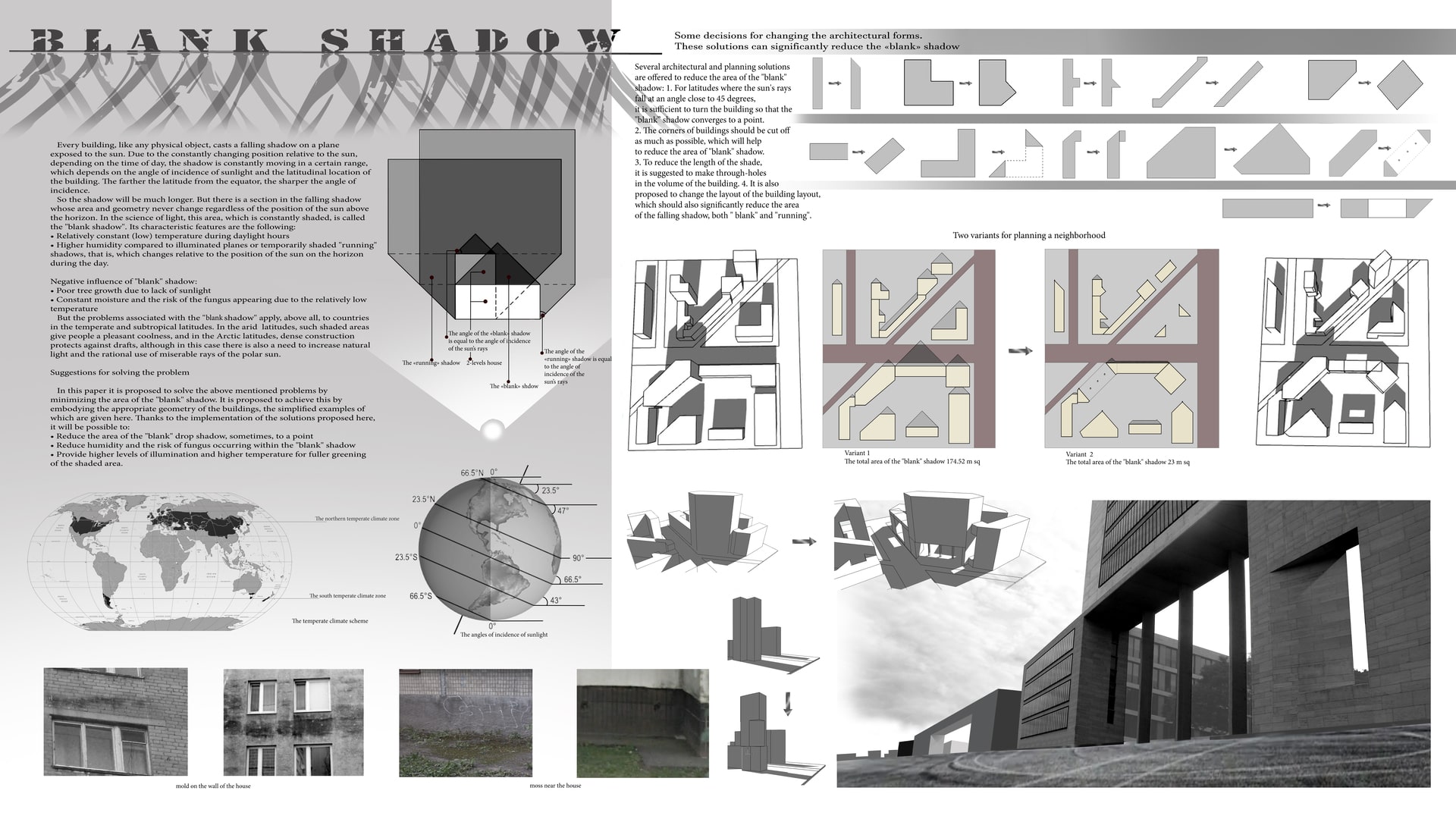Project Description
Every building, like any physical object, casts a falling shadow on a plane exposed to the sun. Due to the constantly changing position relative to the sun, depending on the time of day, the shadow is constantly moving in a certain range, which depends on the angle of incidence of sunlight and the latitudinal location of the building. The farther the latitude from the equator, the sharper the angle of incidence. So the shadow will be much longer. But there is a section in the falling shadow whose area and geometry never change regardless of the position of the sun above the horizon. In the science of light, this area, which is constantly shaded, is called the "blank shadow". Its characteristic features are the following: • Relatively constant (low) temperature during daylight hours • Higher humidity compared to illuminated planes or temporarily shaded "running" shadows, that is, which changes relative to the position of the sun on the horizon during the day. Negative influence of "blank" shadow: • Poor tree growth due to lack of sunlight • Constant moisture and the risk of the fungus appearing due to the relatively low temperature But the problems associated with the "deaf shadow" apply, above all, to countries in the temperate and subtropical latitudes. In the arid latitudes, such shaded areas give people a pleasant coolness, and in the Arctic latitudes, dense construction protects against drafts, although in this case there is also a need to increase natural light and the rational use of miserable rays of the polar sun. Suggestions for solving the problem In this paper it is proposed to solve the above mentioned problems by minimizing the area of the "blank" shadow. It is proposed to achieve this by embodying the appropriate geometry of the buildings, the simplified examples of which are given here. Thanks to the implementation of the solutions proposed here, it will be possible to: • Reduce the area of the "blank" drop shadow, sometimes, to a point • Reduce humidity and the risk of fungus occurring within the "blank" shadow • Provide higher levels of illumination and higher temperature for fuller greening of the shaded area. Several architectural and planning solutions are offered to reduce the area of the "blank" shadow: 1. For latitudes where the sun's rays fall at an angle close to 45 degrees, it is sufficient to turn the building so that the "blank” shadow converges to a point. 2. The corners of buildings should be cut off as much as possible, which will help to reduce the area of "blank" shadow. 3. To reduce the length of the shade, it is suggested to make through-holes in the volume of the building. 4. It is also proposed to change the layout of the building layout, which should also significantly reduce the area of the falling shadow, both " blank" and "running".
